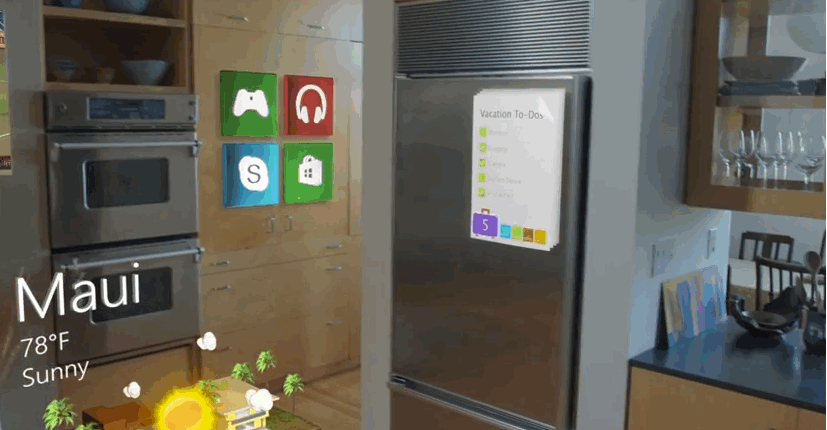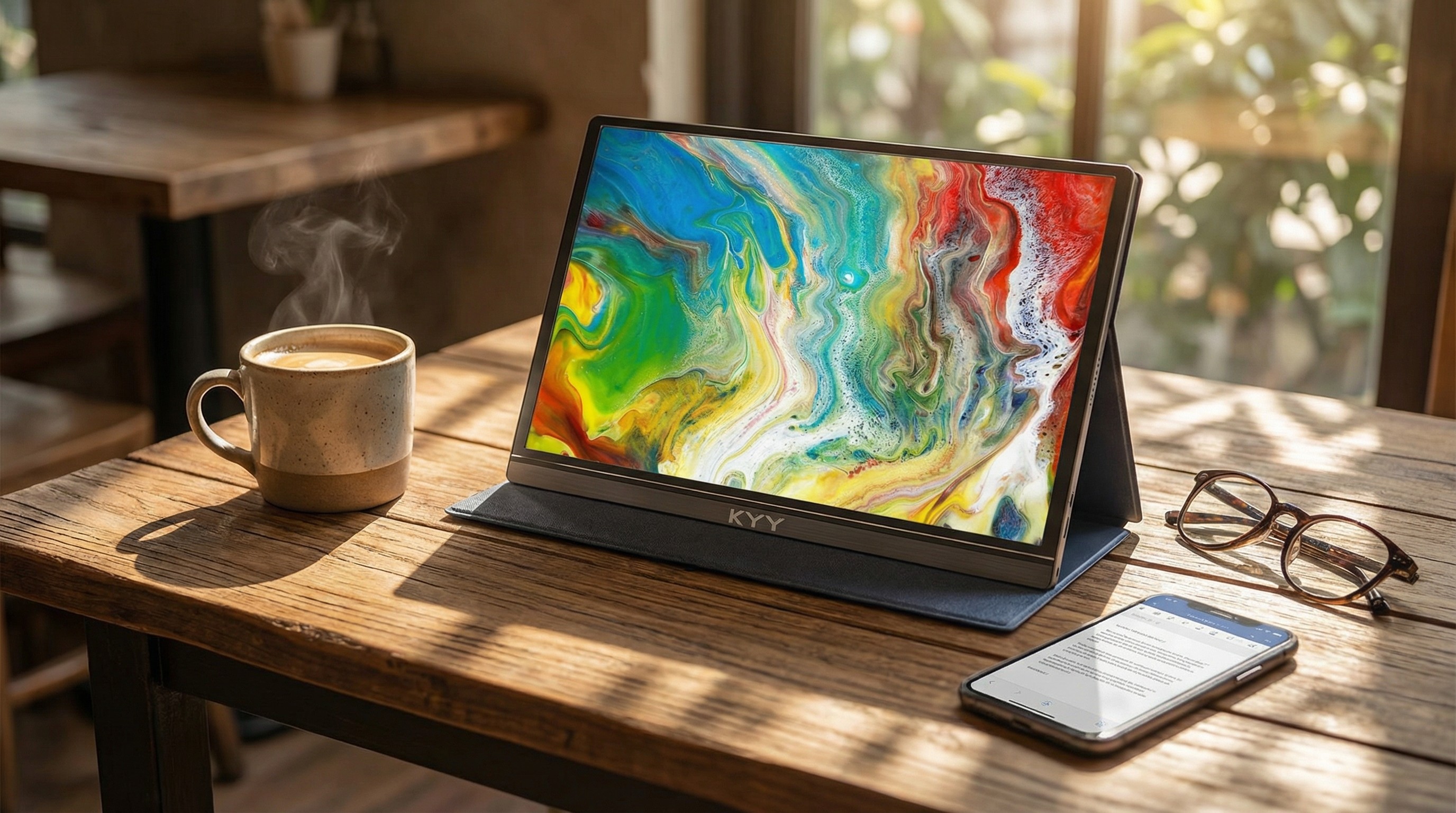How Microsoft's mixed reality strategy may augment its Home Hub and IoT visions
There was a time when the projection of virtual objects onto our real world required the power of movie magic and special effects.

Now a visit to a local Microsoft store can give you access to a world where alien robots burst through walls. Well, that's as long as you've donned Microsoft's HoloLens. The presence of digital elements in our physical world is a reality.
Microsoft's goal, as seen in the company's vision of a scuba diver's augmented POV in the video below, is to provide a platform where holographic computing is applied in a variety of scenarios.
Redmond envisions a future where fluid interaction with digital elements that populate our world, augment our perceptions and provide additional information about our environment is the norm.
First things first: Holo-foundation
HoloLens is Microsoft's untethered wearable computer that showcases the augmented-reality extreme of Redmond's Windows Holographic mixed-reality vision.
Microsoft envisions a future where AR is the norm.
Head Mounted Displays (HMD's) like those coming from Acer, Asus HP, Dell and Lenovo will showcase the Virtual Reality extreme of that vision. VR opposed to AR's overlaying of digital artifacts onto the real world, immerses a user in a virtual environment.

Microsoft's Windows Holographic platform (as part of Windows 10) is being positioned to mainstream AR and VR. Redmond is working to democratize the technology so that everyone has access to it. Affordable AR glasses, I believe, are the long-term goal.
Ambient computing, interfaces in our faces
To understand Microsoft's augmented reality goal, we must consider their ambient computing goal. Ambient computing refers to computing that is part of our environment and not restricted to a localized device such as a desktop PC. Static sedentary computing is personal computing's past.
All the latest news, reviews, and guides for Windows and Xbox diehards.
I expounded on Microsoft's vison of a device-less future in October 2015:
The future of mobile computing is "device-less… The company that has a pervasive presence across all platforms …and supports hardware and software that seamlessly transitions with a user's cloud-based computing needs, will be positioned ahead of the curve…Microsoft is forging a foundation for tomorrow's computing experience.
Microsoft's CEO Satya Nadella has been reinforcing his mobility of experiences vision since he took the helm in 2014. The mobility of a user's digital experiences, not the mobility of our devices is the focus. You are the hub. The Cloud, as an intelligent omnipresent backend, powers these experiences and conveys them across devices. Microsoft's cloud-based services, Universal Windows Platform and Windows 10 family of devices are foundational to this vision. They, however, are not the totality of the mobility of experiences vision.

The Cloud, UWP and Windows 10 devices are just the foundation of Microsoft's mobile strategy.
Microsoft's platform company, "do more" vision, includes every medium through which a user's digital experiences will travel. Thus, a countless array of Internet of Things devices, which Microsoft is determined to infuse with intelligence, are also part of Redmond's mobile strategy.
Connected devices are expected to reach 34 billion by 2020. Microsoft hopes its intelligent cloud, Cortana and bots will be the platform for the majority of those devices. In time, IoT devices may permeate our environment and "know" us at work, in public, and at home. This is Microsoft's (and its rival's) goal.
Seeing the screen-less interface
Microsoft's Home Hub strategy will utilize low-cost ARM-based devices with screens that give us a visual interface to communicate with the IoT:
There will, however, also be millions of devices in our general environment and many in our homes that will be screen-less. Voice will be one way to interact with these devices as Microsoft's investment's in far-field communication indicates. Vision and motion I believe will be another.
AR glasses may allow us to see digital interfaces for screen-less devices.
I believe augmented reality will enable us to "see" digital interfaces and the data associated with screen-less devices. It's conceivable that companies like Microsoft envision a world where the IoT will have both a physical and digital make-up. Not unlike a human being can have a physical body and an invisible soul. This digital component would be visible with AR glasses (that would connect to devices) and could be interacted with via gestures like those we currently see employed with HoloLens.
In the video below London designer, Keiichi Matsuda, explains a vision of AR that helps us visualize this concept.
I contend that Microsoft's IoT and augmented reality visions are not independent of one another. I believe Redmond's goal is that holographic computing will supplement the ambient computing platform IoT may make ubiquitous.
Microsoft shares their vision
Microsoft has produced several videos over the years that provide inspiring imagery of incredible technological vision. At the time of the videos releases most of their content seemed like science fiction. I recently noted, however, that the videos foreshadowed technology that ultimately became a reality.
Microsoft's AR/IoT vision will broaden the scope of managing digital experiences.
Continuum, OS-level digital inking, real-time language translation, 3D computing, computer vision and more were once mere concepts in Microsoft's future vision videos. They are all now real.
The following future vision video which shows a woman using AR glasses (0:01 mark) and a young girl interacting with holographic images at home (4:23 mark) may hint at Microsoft's IoT/AR computing vision.
The realization of this vision is years away, but its foundation is being laid by the industry's fervent embrace of AR and a battle for IoT dominance among the likes of Google, Microsoft, and Samsung.
An all-encompassing ambient computing environment that will be a composite of physical and digital structures is before us. AI that will recognize and "perceive" us via those intelligent devices may work in concert with AR glasses that will allow us to perceive and give us the option to interact with the "digital extensions" and "digital interfaces" of those devices.
Mobile is bigger than we think
Microsoft's IoT, Home Hub and AR visions are components of its mobility of experiences vision. Redmond's vision of facilitating a user's digital experience goes beyond the PC, phone, HoloLens and other members of the Windows 10 device family. The IoT computers that will permeate our environment and help us "do more" at work and play are part of Microsoft's mobile vision.
If Microsoft is successful, rather than a hodge-podge of disparate devices, its single cloud-based intelligent platform will be a singular intelligence linking a bulk of the IoT.
What might that content-saturated digital world look like through augmented reality glasses?

Jason L Ward is a Former Columnist at Windows Central. He provided a unique big picture analysis of the complex world of Microsoft. Jason takes the small clues and gives you an insightful big picture perspective through storytelling that you won't find *anywhere* else. Seriously, this dude thinks outside the box. Follow him on Twitter at @JLTechWord. He's doing the "write" thing!


